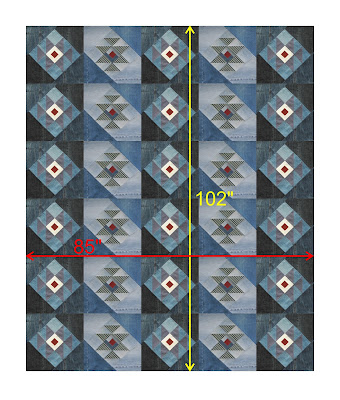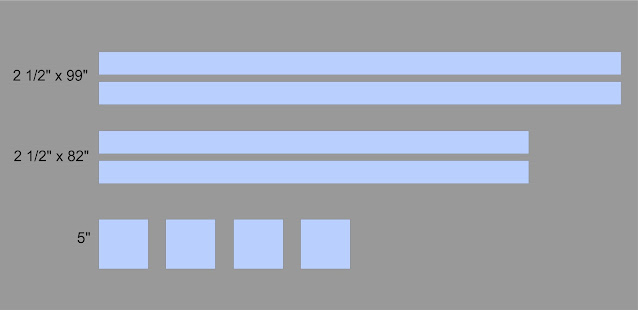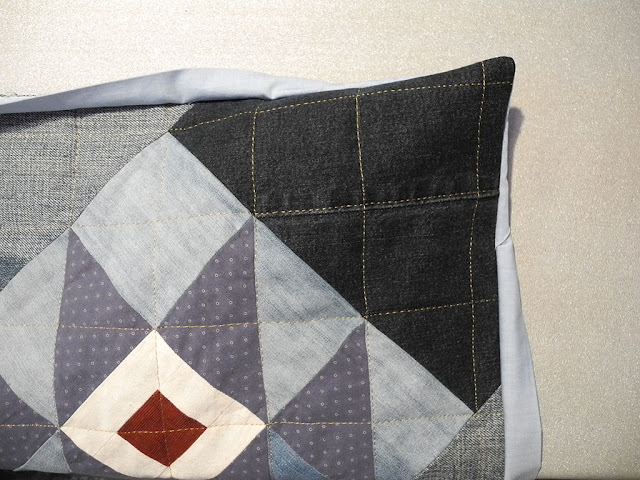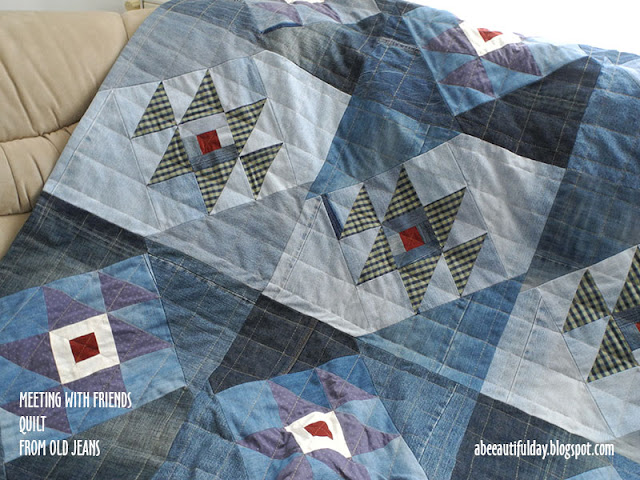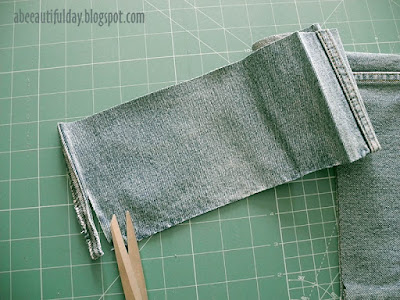I like denim. I’ve always liked to wear jeans, denim
jackets, denim shirts or pinafore dresses. So, the desire to make a quilt from
this kind of cloth came naturally. I asked my family and friends to give me
jeans they no longer wore, and in time I managed to collect about 15-20 pairs.
In
August 2023 I decided to use this pattern and started making the quilt using 10
pairs of jeans and two men's shirts. I finished it in January 2024 after taking about
a three-month sewing break.
When
it comes to sew quilts made of old jeans, the easiest design is the one of
pieces measuring about 5" side and which allows the color shades to be
randomly placed. The internet is full of incredible improvisational denim quilts that are a valuable source of inspiration. But in this post, I'll talk about the key aspects
of my experience sewing a quilt with a structured pattern, which requires a
certain sequence for color/shade variation and pieces with sides up to 10
inches.
In a nut shell, I made a quilt composed of 30 blocks, measuring
around 85" x 102" (215 cm x 250 cm) with the block size of 17"(43.5 cm), using 2 sets of fabrics.
The fabric for the
quilt must be carefully chosen: too much stretch in jeans
fabric gives a wonky shape in the block pieces. To better maintain their
shape, I opted for minimal to no stretch jeans.
I used light, medium, and dark colored jeans for the block
background. I cut the pieces from each color so I could get a light-to-dark
shade effect. I also used two men's shirts as focus fabrics, a piece from
another shirt for the blocks' central squares, and store-bought cotton fabric for
backing and facing (rather than binding).
I washed and lightly ironed/pressed
each pair of jeans, shirts and backing fabric.
From each leg of the jeans I
cut strips with the width on the size of the pieces that I was going to get
from them. Then I worked in different ways with them:
- from one tube-like strips I cut the seams and then I cut the unfolded strips into necessary pieces.
- on others, first I unstitched the seams to increase a little bit their length, I pressed, and then I cut them in pieces.
- from another ones I cut two pieces at a time keeping the tube strip lying flat.
For each block I joined the denim
pieces with different degrees of discoloration aiming to achieve a certain design
when assembling the blocks.
To get more use out of the fabric I even used pieces
that included seams but I carefully adjusted them to avoid bulk.
I kept the seam out of the corners though, because much bulk in the corners makes the pieces too thick to sew.
I pieced the quilt top using ¼"
seams and I pressed them open. For thick denim I recommend ½" seams. Pressing is essential to obtain accurate seams and making your quilt
lie flat.
On the stretch jeans areas I placed the iron on them and hold it still. To move it to a different part of the pieced block, I lifted it up and place it in a new spot. Moving the iron around on the fabric can stretch it out. Flat seams need a careful
steam pressing.
I used
regular polyester thread for piecing, machine embroidery thread for quilting, jeans
needle for both piecing and quilting, and free motion foot for quilting. I chose the quilting thread to match the gold colored double stitching of the jeans. I quilted with straight stitching.
Instead of binding I chose
faced binding. It was the best choice for this denim quilt: the edges came out
nice, thin, straight and flat. I wrote a separate blog post about how I finished this quilt using The facing method.
Because I only had a few pieces of each color shade, setting up them took a lot of attention in order to get repetitive sequences. Here is the result:
Have a beautiful sewing day, my dears!
